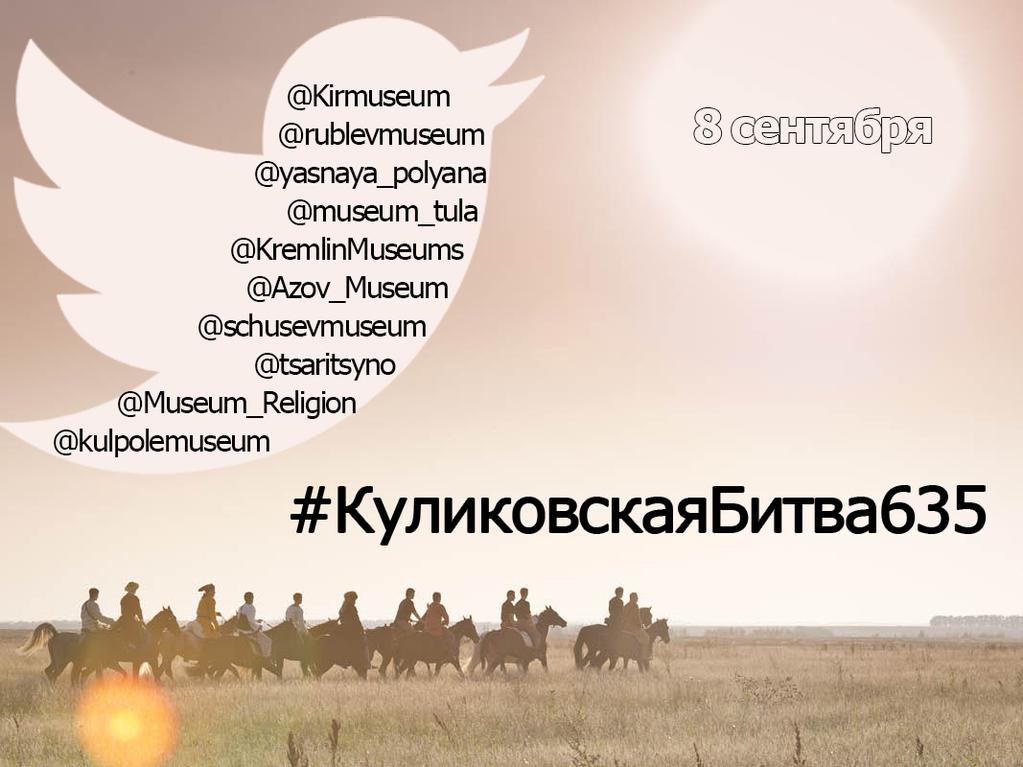
The action marking the 635th anniversary of the Battle of Kulikovo (according to the Julian calendar) was held in Twitter yesterday, on September 8. It was initiated by the State Museum-Preserve “The Kulikovo Field”. This idea was supported by the Moscow Kremlin Museums, the Shchusev State Museum of Architecture, the State Museum of History of Religion, the Kirillo-Belozersky Museum-Reserve, the State Museum-Preserve “Tsaritsyno”, the Museum-Estate of Leo Tolstoy “Yasnaya Polyana”, the Central Andrey Rublev Museum of Ancient Russian Culture and Art, the Azov Museum-Preserve, the Tula Museum Association.
During the whole day, these museums posted different stories about the battle and its heroes and some interesting facts that were directly or indirectly connected with the battle. For instance, the State Museum-Preserve “The Kulikovo Field” told about the event in the language of the 17th-century miniatures; the Moscow Kremlin Museums conducted a tour of the Cathedral of the Archangel where Dmitry Donskoy was buried. The Azov Museum-Preserve shared information about everyday life of the warriors of the Golden Horde attaching photos of the articles found during the archeological excavations.
The presentation of the Kirillo-Belozersky Museum-Reserve consisted of several parts. The first one was about the role of the Belozersk district in the Battle of Kulikovo. The second and the third ones described what connected the family of Dmitry Donskoy and St. Kirill Belozersky. The case in point in the fourth part was the collection of monk Yefrosin of the 15th century from the monastery library that contained the most ancient copy of “Zadonshchina”. The subscribers were really interested in everything – they followed all publications and asked questions.
The hashtag of the action #KulikovoBattle635 that marked all thematic tweets was among the most topical Russian subjects in Twitter. The materials published by the museums were united in one list and placed here: https://storify.com/kulpolemuseum/kulikovskayabitva635. Everybody who wants can see and read them no matter whether you are registered in Twitter or not.
Keep up with the Kirillo-Belozersky Museum-Reserve in Twitter: look for its profile (the user name is @Kirmuseum) or follow the link https://twitter.com/Kirmuseum.







